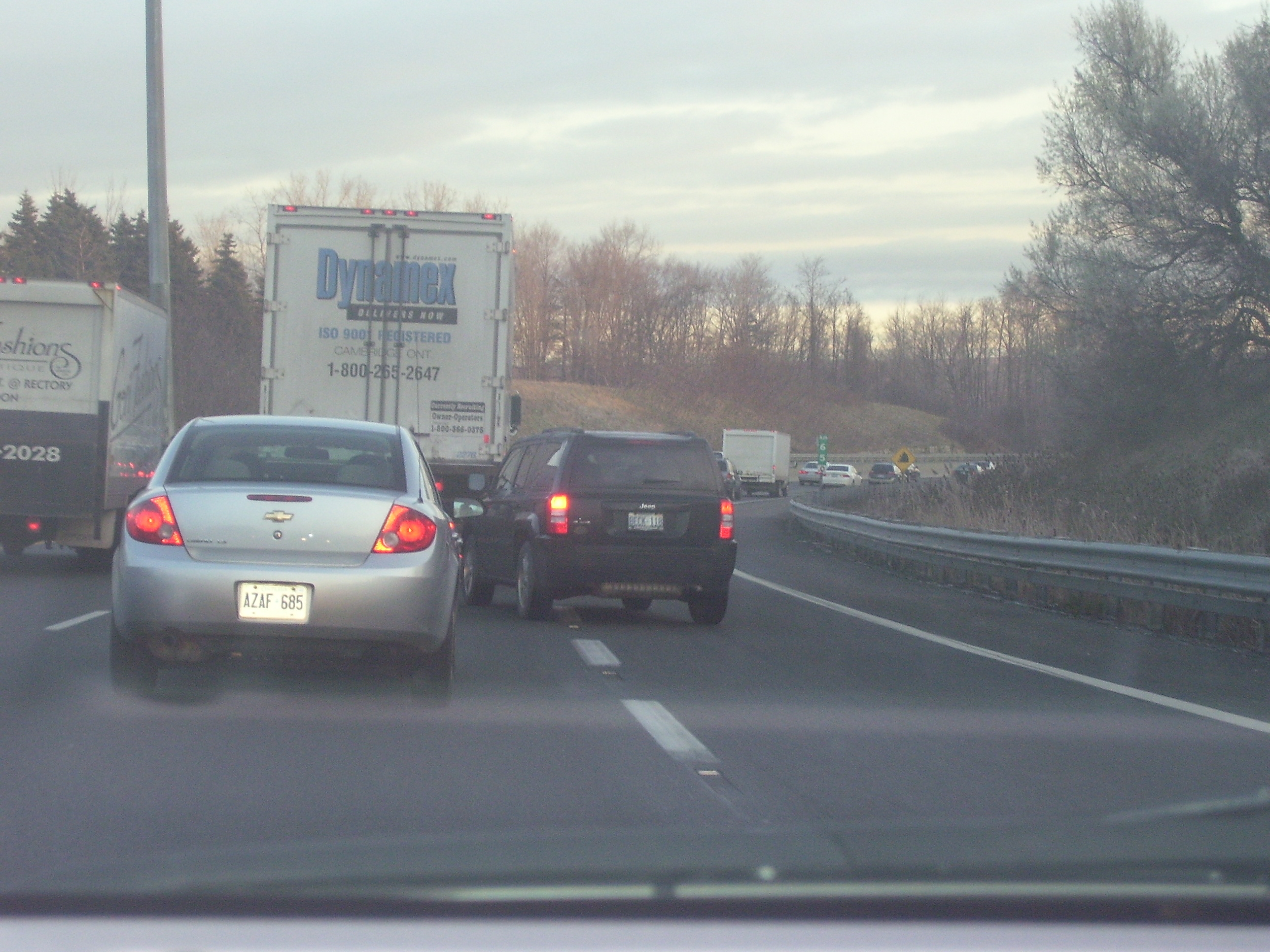How a zipper merge is supposed to work
 Way back in the early 1900’s a man by the name of Gideon Sundback, a Swedish-American engineer, invented the modern zipper. A few years later, traffic gridlock was invented. It’s too bad the two couldn’t work together and solve a problem.
Way back in the early 1900’s a man by the name of Gideon Sundback, a Swedish-American engineer, invented the modern zipper. A few years later, traffic gridlock was invented. It’s too bad the two couldn’t work together and solve a problem.
When traffic is merging into another lane, such as in a construction zone, a lane closure or a highway or freeway, it helps all drivers if they could safely and smoothly merge together. Sort of like how a zipper works. This is often been referred to as the “zipper merge” because drivers from two lanes blend into one in what appears to be a seamless process. Well…it should be seamless, but it often isn’t.
For many people, it makes sense to use the zipper merge to blend into traffic. It takes very little effort, but it does take effort from all those involved. If you’re already in the flowing lane it’s best to keep a proper following distance from the vehicle ahead of you. You can still drive as fast as the traffic ahead of you. You just happen to have a larger gap between your vehicle and the vehicle ahead of you. Although many drivers believe following distance is judged by car lengths, it’s not. It’s judged by how many seconds you are traveling behind the vehicle in front of you. Following distance can be explained more HERE.
 For those who are traveling along the lane which is closing with the hope to enter the flowing lane, you also must keep a safe following distance. Keeping this space between your vehicle and the vehicle ahead of you will help you to slide smoothly over into the next lane – aka like a zipper. You can really help yourself by keeping that extra space. Mistakes I see every day during my commute has drivers following too closely on the flowing lane and the same for those needing to merge with the other traffic. Neither side can allow the other side to slide over in the zipper merge. This is when frustration and unnecessary braking happens. It slows the traffic down even more. What happened to cooperative driving?
For those who are traveling along the lane which is closing with the hope to enter the flowing lane, you also must keep a safe following distance. Keeping this space between your vehicle and the vehicle ahead of you will help you to slide smoothly over into the next lane – aka like a zipper. You can really help yourself by keeping that extra space. Mistakes I see every day during my commute has drivers following too closely on the flowing lane and the same for those needing to merge with the other traffic. Neither side can allow the other side to slide over in the zipper merge. This is when frustration and unnecessary braking happens. It slows the traffic down even more. What happened to cooperative driving?
Traditionally, the zipper merge is often referred to and used by waiting until you reach the end of the closing lane and then slide over. Many drivers feel like those drivers are cutting off the drivers who are already in the flowing lane. Yes and no. Regardless of when you’re merging in, you’re most likely moving in front of another vehicle anyway, so what’s the big deal? Just do it and accept that other drivers will need to merge into your lane. Here’s how the zipper merge traditionally works in slow traffic http://journalstar.com/video-how-zipper-merge-works/youtube_c53c06cc-e77c-58a3-9b07-37af397163f4.html
Some drivers believe merging in early is the polite way to do it. Others believe merging in at the end of the closed lane allows for more flowing lanes before the closed lane. Whether you believe merging in early or merging in late is appropriate, creating a space large enough between vehicles to allow traffic to blend in together still needs to happen. So create the space… and zip it.

You are right on Scott.
Add to that, that all lanes can keep moving while merging. Stop the stop and go. Unfortunately the new idiot trend is to pull from the flow lane into the merge lane and beat three cars ahead. Such nonsense.
I drive a Highway Coach and I can keep a proper flow and rarely need to brake.
It is in many cases a seamless process, but if there is a bus or a truck coming in from the closing lane, it probably won’t fit your space.
So you have option a) slam on brakes, butterfly effect or option b) keep going and make those coming from a closing lane suffer.